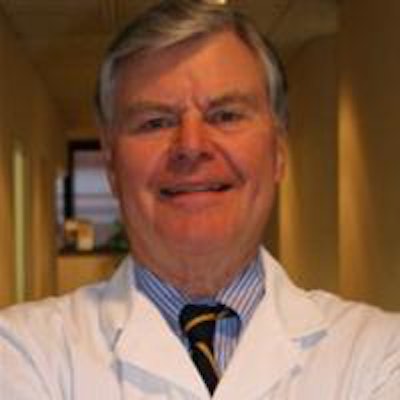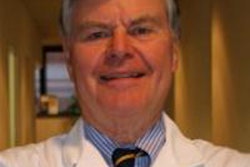
"A pessimist sees the difficulty in every opportunity; an optimist sees the opportunity in every difficulty."
— Winston Churchill
 William T. Brown, DDS.
William T. Brown, DDS.When I finished dental school a half century ago, the common image of dentists was basically the same. There were different personalities, different technical abilities, but the practice model and technologies fundamentally looked the same. Even the typical medical practice was independent and either solo or small specialty groups.
Those days are gone, and we are now experiencing the "new normal." What is the new normal?
Dentistry used to be a profession with elements of business. Some might say that now it has changed into a business with elements of professionalism.
In a few short years, a transformation in the delivery of dental services has occurred. The dental management companies establish a brand rather than placing dentists as the captain of the ship. In my view, this tends to diminish the profession. Dentists are in a new role as employees in different settings, whether it be in a dental maintenance organization or a federally funded community health center. In the eyes of some observers, the traditional family dental practice appears to be a dinosaur in this brave new world.
Monumental change
In addition, the demographics are changing radically. The old days of the dental office in small town America is going the way of the mom and pop grocery store. In Kansas, there are reportedly 24 counties that don't have a dentist. In my county (the poorest in Iowa) there is one part-time private dentist and one full-time dentist at the federally qualified community health center to serve 8,284 souls. (At the turn of the 20th century, the county had more than 20,000 inhabitants.) Many rural communities no longer have a physician, a dentist, or a proper grocery store; instead, residents have to drive 30-plus miles to get these services. With gas approaching $4 a gallon, that becomes a serious problem for fixed- or limited-income citizens.
So it is clear we are in the midst of a historic demographic conversion. A snapshot of our nation at 2050 will see an astonishing diversity and youthfulness with an increased population by more than 100 million. The portion of 65-year-olds is expected to increase from the present 13% to 20% by 2050. In contrast, with most advanced nations, the U.S. will have a rising population of working and young people. Between 2000 and 2050, census data suggest that the 15-64 age group in the U.S. is expected to grow 42%. By comparison, because of falling fertility rates, the number of young working-age people is expected to decline elsewhere: by 10% in China, 25% in Europe, 30% in South Korea, and more than 40% in Japan.
Within the next 40 years, most of the countries in Europe and East Asia will be veritable retirement homes, with more than a third of their populations older than age 65. By contrast, the U.S. will likely have more than 350 million people younger than age 65.
The number of children a woman is expected to have in her lifetime hit 2.1 in 2006, with 4.5 total births. That was the highest fertility rate in 45 years, largely as a result of recent immigrants, who tend to have more children than residents whose families have been in the U.S. for several generations. In addition, the U.S. is on the verge of a baby "boomlet," as children of the original baby boomers have children of their own, according to an article in Smithsonian Magazine (July-August 2010).
"When we are no longer able to change a situation — we are challenged to change ourselves."
— Viktor Frankl, MD, PhD
Warren Buffet said recently, "In the 20th century, the U.S. has endured two World Wars, other traumatic and expensive military conflicts, the Depression, a dozen or so recessions and financial panics, oil shocks, a flu epidemic, and resignation by a disgraced president. Yet the Dow Jones rose from 66 to 11,497."
In other words, we Americans have a spirit and resilience that can overcome the slings and arrows of outrageous fortune. We survive.
Time marches on
In my view, the future looks very bright for U.S. and the dental profession. The prospects will be different, and dentists must meet the challenges and view them as opportunities. The changes coming can't be stopped.
It will be imperative for the profession to embrace the founding principles of taking care of patients first and foremost as a keystone to practice, regardless of the setting or venue.
A fundamental measure is a patient-first philosophy in which the dentist performs diagnosis based on comprehensive examination. Doctor literally means teacher, so each dentist should be dedicated to teaching patients how bacterial plaque works to cause disease, the skills necessary to control plaque, and motivation to manage their disease on a long-term basis. Patients with limited finances especially need to be taught control measures for they can least afford dental repairs.
Consultations based on informing patients on the difference between mandatory and elective treatment, with emphasis on prognosis and limitations.
True relationship-based practice can not only endure, but also thrive in the midst of social change. By following these foundational principles, patients are offered a lifetime of their natural teeth and the ultimate decrease in dental repair. A population with generations of people mouths blessed with comfort, function, and pleasing appearance is a legacy that any profession could be proud of.
William T. Brown, DDS, practices in Des Moines, IA and writes a monthly blog, Dental Intelligence, to share information and experiences that have fundamentally changed the way dentistry is practiced.



















